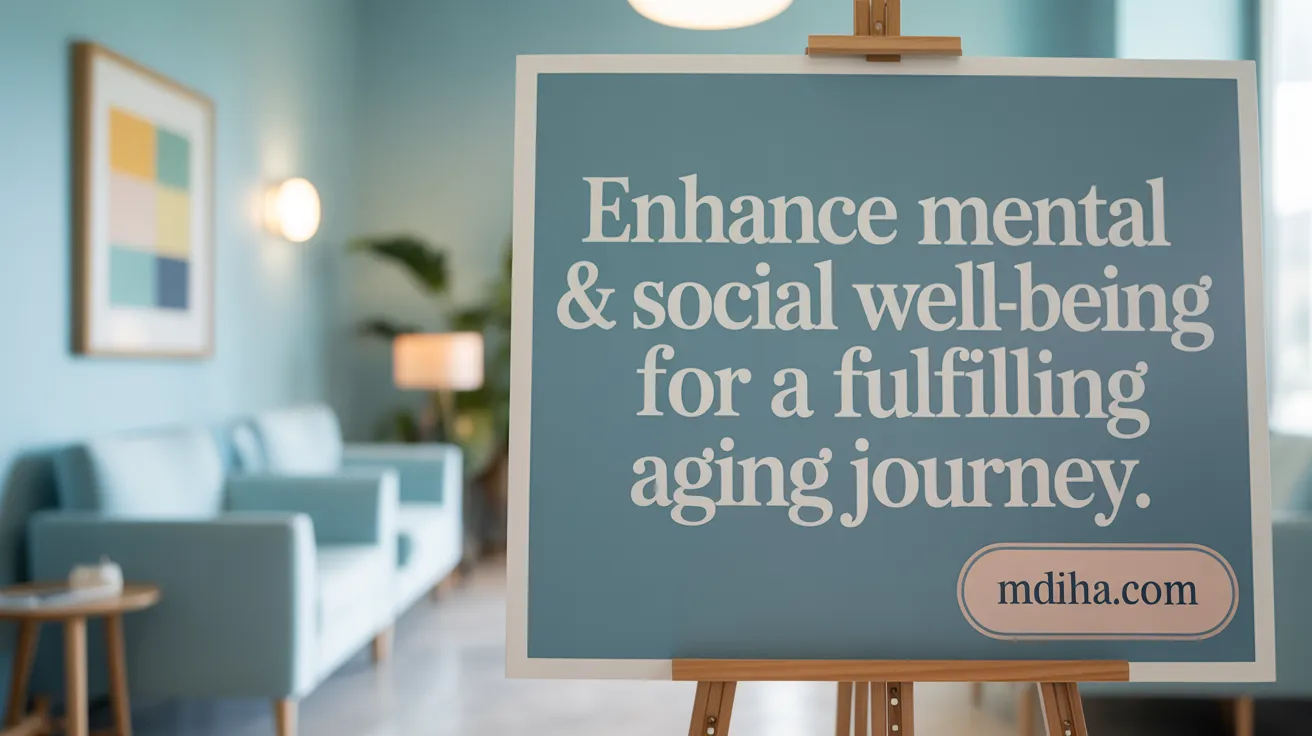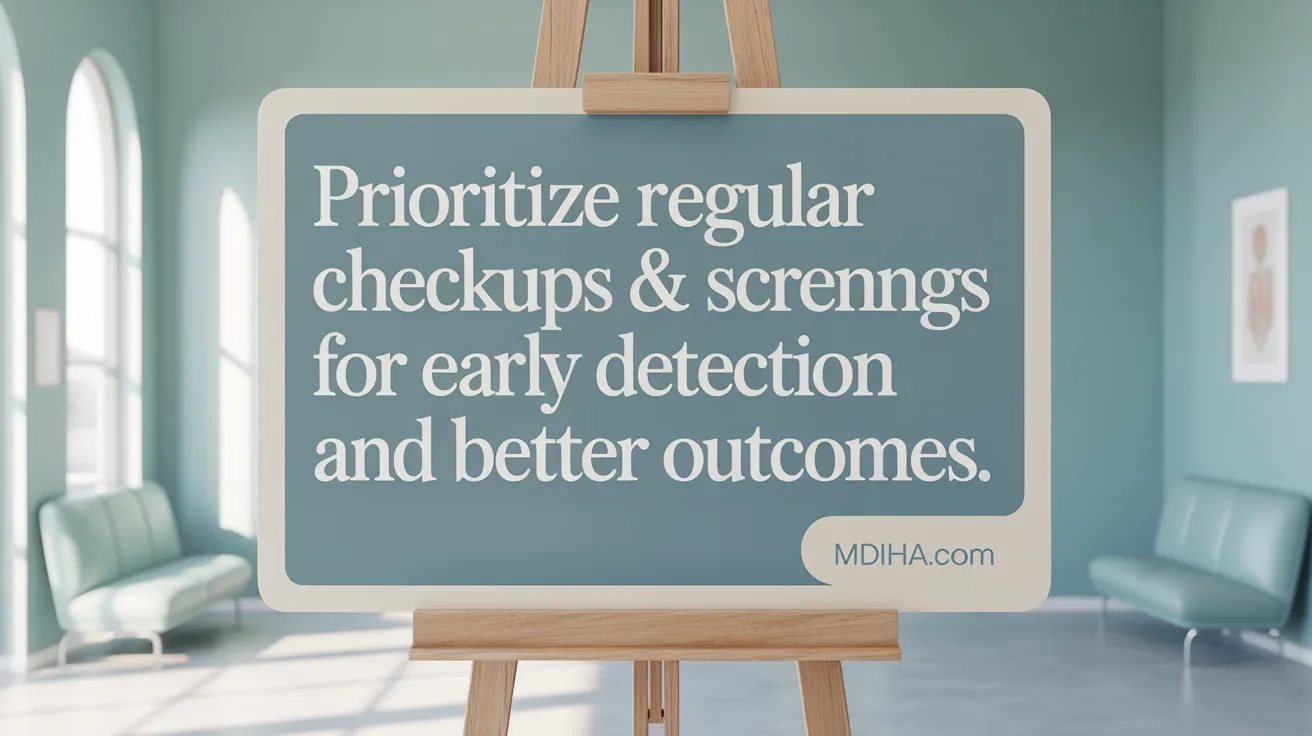The Continuous Journey of Healthy Aging
Understanding Healthy Aging
Healthy aging is a dynamic and ongoing process that begins early in life. It involves the maintenance of optimal physical, mental, and social well-being as individuals advance in age.
Early Adoption of Healthy Habits
Starting a regimen of balanced nutrition, regular physical activity, and proactive healthcare from an early stage significantly enhances health outcomes later in life. Early lifestyle modifications can prevent or delay the onset of chronic diseases, preserve functional independence, and extend healthspan.
A Holistic Approach
Successful healthy aging encompasses multiple dimensions: maintaining muscle strength and cardiovascular health through exercise, supporting cognitive function via mental stimulation and emotional well-being, and fostering social connections to improve quality of life. Integrating these elements creates a comprehensive strategy that addresses the complex needs of aging adults.
Recognizing aging as a continuous journey emphasizes the importance of consistent self-care and professional health oversight to optimize longevity and preserve vitality.
Nutrition and Physical Activity: Foundational Pillars at Every Age

What diets have been shown to support healthy aging and reduce chronic disease risk?
Numerous studies highlight the significant role diet plays in healthy aging. The Mediterranean-style diet, emphasizing fruits, vegetables, whole grains, and healthy fats, is strongly associated with reduced risks of cardiovascular diseases and cognitive decline. Similarly, the DASH (Dietary Approaches to Stop Hypertension) diet effectively lowers blood pressure and decreases the risk of diabetes and heart disease. The MIND diet, which strategically combines components of both the Mediterranean and DASH diets, is linked to improved cognitive function and slower progression of cognitive decline.
How much physical activity is recommended for adults and older adults to promote healthy aging?
Physical activity is crucial in reducing mortality and promoting healthspan. Adults over 40 are advised to engage in at least 150 minutes per week of moderate to vigorous physical activity, such as walking, swimming, or cycling. This guideline is supported by evidence that shows a reduction in death risk by up to 51% in this demographic when adhering to regular exercise routines. For older adults, incorporating balance and muscle-strengthening exercises further supports mobility and independence. Learn more about physical activity benefits for older adults and physical activity guidelines.
Why is maintaining muscle mass and bone health important for longevity?
Muscle mass surpasses body mass index (BMI) as a predictor of longevity in adults over 55. Maintaining muscle through resistance or weight-bearing exercises preserves physical function and reduces risks associated with frailty. Bone health is equally important; adequate calcium intake (1000-1200 mg daily), sufficient vitamin D through diet and sunlight exposure, and engaging in weight-bearing activities prevent osteoporosis and fractures, common age-related concerns. For detailed guidance, see calcium sources for seniors and vitamin D and bone health.
Hydration and nutrient intake to prevent common age-related issues
Proper hydration and nutrient intake are essentials frequently overlooked in aging populations. Adequate fluid intake supports cognitive function, joint health, and cardiovascular performance. Nutrients like omega-3 fatty acids, vitamin D, B vitamins, and fiber contribute to metabolic regulation, immune support, and gastrointestinal health, helping mitigate common age-related problems such as constipation and inflammation. For more information, visit nutrient-rich foods for older adults and dietary habits for healthy aging.
Maintaining these nutrition and physical activity strategies offers a scientific foundation for longevity and quality of life across all ages, laying a pathway towards a healthier aging process.
Mental, Social, and Emotional Well-being: Essential Components for Aging Gracefully

How can mental and social activities benefit cognitive health in older adults?
Engaging in cognitive stimulation activities, such as learning new skills or joining clubs, plays a crucial role in preserving mental function in older adults. These pursuits help maintain neural connections, reduce the risk of depression, and can slow cognitive decline by continuously challenging the brain (Mental health and sense of purpose in aging, Cognitive health tips for older adults, Healthy aging, Social engagement benefits).
Social connectedness and community engagement provide significant mental health benefits. Regular interaction with family, friends, and community groups promotes emotional well-being and helps mitigate feelings of loneliness and social isolation, which are linked to higher risks of cognitive impairment and cardiovascular diseases (Loneliness and health risks, Social engagement benefits, Healthy aging tips, Social health in aging.
What role does emotional well-being and stress management play in healthy aging?
Emotional well-being is vital for overall health during aging. Stress management techniques like meditation, yoga, and journaling have been demonstrated to reduce psychological stress, lower inflammation, and improve cardiovascular health (Managing Stress with Yoga, Yoga and Journaling Benefits, Preventing chronic diseases).
These practices support resilience against age-related physiological decline and promote longevity by maintaining hormonal balance and mental equilibrium. Access to mental health resources and support networks is essential for addressing anxiety, depression, and emotional challenges in older adults (Emotional well-being for seniors, Mental health throughout life, Healthy aging overview).
By integrating mental stimulation, social engagement, and effective stress management into daily routines, older adults can enhance brain health, emotional stability, and quality of life, fostering graceful and healthy aging (Healthy aging overview, Tips to Boost Your Health as You Age, Physical activity benefits for older adults).
Personalized Health Optimization and Advanced Diagnostics in Longevity Care
How do advanced diagnostics enhance personalized health optimization for aging individuals?
Advanced diagnostics—such as comprehensive blood panels for longevity, full-body magnetic resonance imaging (MRI), VO2 max testing for fitness, and dual-energy X-ray absorptiometry (DEXA) scans—play a pivotal role in tailoring health optimization for aging adults. These tests collectively provide a detailed overview of an individual's physiological state, from organ health and muscle mass to cardiovascular fitness and bone density. For example, biological age estimation via DNA methylation analysis offers insights beyond chronological age, reflecting cellular and molecular aging processes.
By identifying unique health risk profiles through these modalities, practitioners can develop targeted interventions that address specific vulnerabilities, thus enhancing prevention strategies and extending the healthspan—the period of life spent in good health. This personalized data-driven approach enables early detection of subclinical conditions and precise monitoring of therapeutic effectiveness.
Why is personalized medicine important in managing age-related conditions?
Standard clinical tests like cholesterol panels or stress tests may overlook critical factors such as insulin resistance, which is integral to coronary artery disease risk. Personalized medicine integrates advanced diagnostics—including genetic testing, metabolic evaluations, and biological age assessments—to capture the multidimensional aspects of aging-related diseases.
This comprehensive risk assessment allows healthcare specialists to address complex disorders such as cardiovascular disease, hormonal imbalances, chronic inflammation, and metabolic syndrome with tailored therapeutic plans. Incorporating nutritional supplementation, hormone replacement, customized exercise regimens, and lifestyle modifications ensures interventions are optimized for the individual's risk factors and health goals.
Such precision in managing age-related conditions is especially significant in aging populations within regions like California, where access to cutting-edge medical technology facilitates proactive health management. Ultimately, personalized medicine fosters early diagnosis, improves clinical outcomes, and supports graceful aging through scientifically grounded, individualized care.
Navigating the Stages of Aging: Tailored Strategies for Each Phase

What are the distinct stages of aging and their characteristics?
Aging progresses through several distinct phases, each with unique challenges and needs. The initial stage, self-sufficiency, is characterized by seniors maintaining independence and the ability to perform daily activities. During this phase, sustaining healthy habits such as nutritious eating, regular exercise, and active social engagement lays the foundation for aging well. Learn more about these stages in detail at stages of aging.
The second phase, interdependence, involves an increasing need for support. Individuals may begin to experience early cognitive decline, requiring home modifications and regular monitoring. Emotional support becomes paramount during this stage due to potential stress, anxiety, or depressive symptoms related to emerging health concerns.
Dependence marks a stage where seniors require significant assistance, sometimes necessitating relocation to assisted living or care facilities, though some may continue residing at home with comprehensive support. Crisis management follows, involving acute health emergencies and critical medical interventions. This often leads to temporary or permanent institutional care.
Finally, the end-of-life stage focuses on comfort and dignity, with palliative or hospice care predominating.
How can individuals and families prepare to optimize health and care across these stages?
Preparation is essential to optimize outcomes across the aging continuum. Early adoption of healthy lifestyle choices—including balanced nutrition, physical activity, regular cognitive stimulation, and social engagement—can delay the progression of age-related decline. For comprehensive guidance on maintaining physical, mental, and social health during aging, see Healthy aging tips and strategies.
Families and individuals should monitor for early signs of cognitive impairment, enabling timely interventions. Home environments need adaptations such as fall-prevention measures and accessibility improvements as support needs evolve. Fall prevention and home safety are critical components discussed in Preventing falls in older adults.
Emotional well-being requires ongoing attention through counseling, community resources, and caregiver support to mitigate stress throughout transitions. Resources on managing emotional health and caregiving can be found at Healthy aging and caregiving tips.
Proactive planning and education can empower families to navigate shifts in care requirements, ensuring safety and quality of life for aging loved ones. Exploring tailored strategies and comprehensive care approaches is facilitated by Healthy Journey to Live Longer and Age Gracefully.
These tailored strategies respond to changing physiological, cognitive, and emotional needs, promoting a comprehensive approach to healthy aging.
Preventive Healthcare and Screening: Cornerstones of Healthy Aging

Why are regular health checkups and screenings pivotal for older adults?
Regular health screenings and check-ups serve as a foundational element in healthy aging by enabling the early detection and management of chronic conditions such as heart disease, diabetes, and cancer. Early diagnosis through routine medical evaluations significantly improves treatment outcomes and reduces the risk of advanced complications, thereby enhancing quality of life and extending healthspan.
What measures help prevent fall-related injuries in older adults?
Fall prevention is critical in safeguarding the health and independence of older adults. Effective strategies include:
- Engaging in regular physical activity designed to improve balance and muscle strength.
- Obtaining routine eye and ear examinations to address sensory impairments that increase fall risk.
- Implementing home safety modifications, such as removing tripping hazards and installing grab bars.
- Ensuring adequate intake of calcium and vitamin D to support bone health and reduce osteoporosis-related fracture risk.
Managing Chronic Conditions Through Early Detection
The proactive monitoring of chronic diseases via periodic screenings allows for timely intervention and better disease control. This approach helps prevent disease progression, lowers hospitalization rates, and improves long-term health prospects in aging populations.
Medication Management and Safety
Older adults often manage multiple health conditions requiring various medications. Careful medication review and management are essential to avoid adverse drug interactions, ensure correct dosages, and optimize therapeutic effects. Collaboration with healthcare providers facilitates the safe and effective use of medications (source).
Together, these preventive healthcare measures form an integrated approach that supports healthy aging by maintaining functional independence and minimizing health risks commonly encountered with advancing age.
Holistic Lifestyle Considerations: Sleep, Substance Use, and Environmental Factors

How does sleep impact healthy aging and how can older adults improve it?
Quality sleep is fundamental to healthy aging, supporting both cognitive functions such as memory and attention, and physical health, including immune function and metabolic regulation. Older adults require approximately 7 to 9 hours of sleep per night to maintain optimal health. Strategies to enhance sleep quality include maintaining a consistent sleep schedule, avoiding late-day naps that can disrupt nighttime rest, and increasing exposure to natural light during the day to support circadian rhythm alignment.
What lifestyle factors beyond diet and exercise influence aging outcomes?
Lifestyle choices such as smoking cessation and alcohol moderation substantially influence aging trajectories. Quitting smoking reduces risks of several cancers, lung diseases, and cardiovascular conditions, while moderating alcohol intake helps mitigate depression and other health risks common in later life. Environmental considerations, notably sun protection, are vital to prevent skin damage and reduce risk of skin cancers. Respiratory illness prevention through vaccination and hygiene also remains crucial for older adults. Positive mental health, including maintaining a sense of purpose and emotional well-being, has been shown to enhance longevity and quality of life.
Together, these holistic factors complement nutrition and physical activity, forming a comprehensive approach to healthy aging. Emphasizing sleep hygiene, substance use avoidance, environmental safeguards, and mental wellness offers a multidimensional strategy for extending healthspan and fostering graceful aging.
Empowering Healthy Aging at Every Stage
Personalized Approaches to Healthy Aging
Personalized health strategies are crucial for promoting healthy aging tailored to individual needs. Advanced diagnostics, including genetic testing and comprehensive health screenings, enable tailored interventions addressing specific risks such as cardiovascular disease, metabolic syndrome, and cognitive decline. Experts like Dr. Arash Bereliani emphasize the significance of integrating traditional cardiology with functional medicine, focusing on nutrition, supplementation, and proactive management.
Proactive Lifestyle and Medical Engagement
Adopting proactive lifestyle habits—regular physical activity, nutrient-rich diets, mental stimulation, and social engagement—substantially reduces the risk of chronic diseases and cognitive decline. Preventive healthcare, including vaccinations and routine screenings, helps detect issues early and promotes longevity. Behavioral changes like quitting smoking and managing stress further optimize health outcomes.
Vision for Optimal Healthspan and Quality of Life
Beyond lifespan extension, the goal is maximizing healthspan—the period of life spent in good health. Emerging interventions such as epigenetic reprogramming, senolytic therapies, and personalized supplement plans offer promise in delaying aging processes. Emphasizing emotional well-being, purpose, and community connection supports holistic aging, ensuring a higher quality of life through each life stage.
